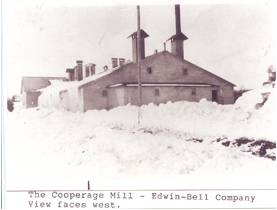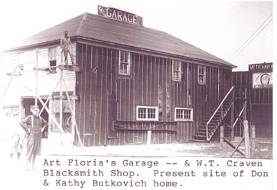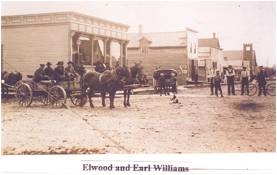Area History
The first white settlers to the area, the William Boucher family, came here from Mackinac Island to trade furs with the Ojibway Indians. They built their first house on the “Point” (near the location of the Naubinway Marina). The family remained there until approximately 1857. On March 10, 1873, William received from the Federal Government a deed to a 27.30-acre piece of land in Naubinway. It was signed by President Ulysses S. Grant, and under the provisions of the Public Land Act of 1820, he may have paid as little as $1.25 per acre. In the sale, he obtained the title to “The lot numbered Four of Section twenty-eight in Township forty-tree of Range Nine west…subject to sale at Marquette, MI.”
Did you know?
Although the first white man may have passed through the middle of what is now called the Naubinway and Engadine area as early as 1640, the influx of settlers began 200 years later.
From Kennedy to Engadine The Canadian Pacific Railroad ran through the town of Kennedy and a Post Office was opened there on August 23, 1889. Millions of feet of logs were shipped out of Kennedy from about 1889 on. The Canadian Pacific RR was taken over by the Soo Line in 1888, and has been hauling freight through the Hiawatha Sportsman’s Club property ever since.
Sam Peterson came to the area from Enggoden, in southeastern Switzerland. The Valley of Engadine is about 60 miles long. The Inn River runs through it and it is one of the beautiful resort areas of Switzerland. Sam was bookkeeper for the Engadine Lumber Co. and Station Master at the Kennedy Siding, and he was responsible for changing the name from Kennedy to Engadine. The Kennedy Post Office was renamed Engadine on December 2, 1893.
In 1909 the Engadine Lumber Co became the Freeman Lumber Co., which built three lumber camps on the Hiawatha Club property—one on Greylock Trail and two on Trail B.
Learn more about our area
The Engadine Historical Museum reflects life in the community dating back to 1894, focusing on the lumbering and agricultural eras.
The first floor is furnished as a home of that time period. The second floor has a replica of a one-room school house, displays of military artifacts, a reading room, pictures and objects from the Cooperage Mill, which was the community’s largest employer at the time. The garage has displays of tools, equipment, and the old Mackinac County Bank vault. An 1895 log house is now restored and furnished.




